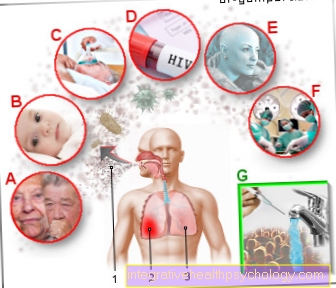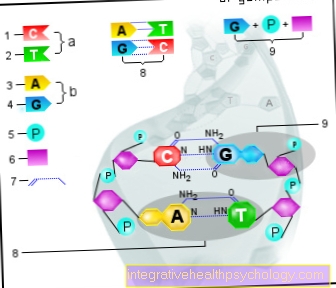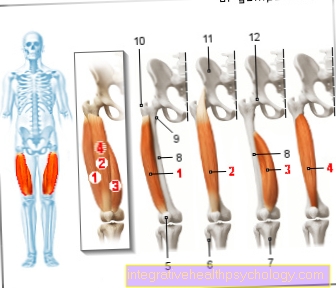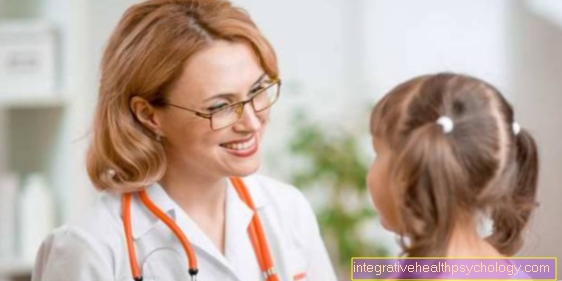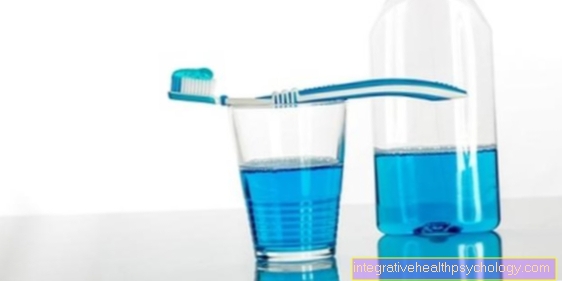Cholesterol Esterase - That's what it's important for!
What is Cholesterol Esterase?
Cholesterol esterases are enzymes that are responsible for breaking down cholesterol ester compounds. Cholesterol esters are made up of cholesterol and fatty acids. These are linked to one another via a certain type of bond, a so-called esterification. The cleavage results in free cholesterol and fatty acids, which are mostly long-chain. Cholesterol esterases occur in the body in the liver, intestines and pancreas and accordingly play a role in the intake of food and the cholesterol metabolism in the body.

Task and function
Cholesterol esterase is an enzyme in the human body that plays an important role in the availability of cholesterol. To do this, cholesterol esterases split so-called cholesterol esters. These are compounds of free cholesterol and a fatty acid that are linked to one another via an ester bond. To break this ester bond, free water is required. This is why this type of cleavage is also known as hydrolysis, i.e. cleavage with the help of water.
The importance of cholesterol esterase for the body depends on its localization. The goal of the body is to take cholesterol from food and store it in the liver so that it can be released from the liver and used when needed. As a substance, cholesterol is particularly important for the structure of the cell membrane and is therefore used almost everywhere in the body. Cholesterol also serves as a starting material for the formation of vitamin D, hormones and bile acids.
In the intestinal mucosa, cholesterol esterase causes cholesterol to be broken down from food, absorbed through the mucous membrane and thus able to get into the body's circulation. The optimal effect of cholesterol esterases in the intestine is supported by bile acids.
In order to be able to be transported in the blood, the cholesterol has to be repackaged after being absorbed into the intestinal cells. This takes place in the form of so-called LDL particles, which ensure that the cholesterol can be transported through the blood to the liver. There it has to be released from these particles again by another cholesterol esterase so that it can be stored and the remains of the particles can be reused.
Learn more about: LDL cholesterol
The storage in the liver also takes place again in the form of an esterification. If the body needs cholesterol, it can be released from the storage form in the liver by cholesterol esterases and then transported to the appropriate location with the help of other forms of transport, so-called HDL particles.
You might also be interested in: HDL cholesterol
Where is it made?
The enzyme cholesterol esterase is produced in the human body in the pancreas and liver. In the pancreas, the production of the exocrine part of the pancreas is taken. After the cholesterol esterase has been released, it reaches the intestine and can take up its splitting effect there. Cholesterol esterase is primarily produced in the liver to store the cholesterol absorbed in the intestine.
What are the normal values for cholesterol esterase?
A blood sample is required to determine the level of cholesterol esterase. In this, the amount can then be measured in a medical laboratory. In a healthy person it is between 3,000 and 8,000 IU per liter. "IE" stands for international units and represents a quantity defined in medicine.
What happens with a cholesterol esterase deficiency?
Since cholesterol esterases play a central role in the body, the effects of a deficiency are also very diverse. If there are too few cholesterol esterases in the body, this leads to a lack of cholesterol, which the body needs in various places. As a result, many cells can no longer work as effectively.
Classically, this shows up in a pronounced lack of drive and exhaustion. Some studies also show that a lack of cholesterol can lead to depression. A gender-specific difference could be determined here: in men, a low LDL value in particular leads to a higher risk of developing depression. In women, however, a connection with a low HDL value and an increased risk of depression was found.
You might also be interested in: depression
What happens when cholesterol esterase is elevated?
An increase in cholesterol esterase can have various consequences, but these depend on various factors. Are there more cholesterol esterases in the body; Correspondingly, more cholesterol can be absorbed from food, transported to the liver and stored. Of course, this is only possible if there is a lot of cholesterol in the diet. The cholesterol that is stored in the liver can accordingly be mobilized more quickly when the cholesterol esterases increase. This can definitely be of advantage for a quickly required cell structure. Of course, it should not be forgotten that too much cholesterol in the body can lead to various disorders, for example diseases of the blood vessels (arteriosclerosis).
You might also be interested in: arteriosclerosis
What is a cholesterol esterase inhibitor?
Cholesterol esterase inhibitors are substances which, through the inhibition of cholesterol esterase, ensure a reduced absorption and supply of cholesterol in the body. This can lower the cholesterol level in the body. This is useful, for example, to reduce the consequences of a long-term elevated cholesterol level and, above all, to prevent or reduce diseases of the arterial blood vessels (arteriosclerotic changes). More common and more effective for this therapeutic goal, however, is the use of statins, which inhibit an enzyme that produces cholesterol (HMG-CoA reductase) and thus prevent the body from producing too much cholesterol.
Read more about the statin: Simvastatin






